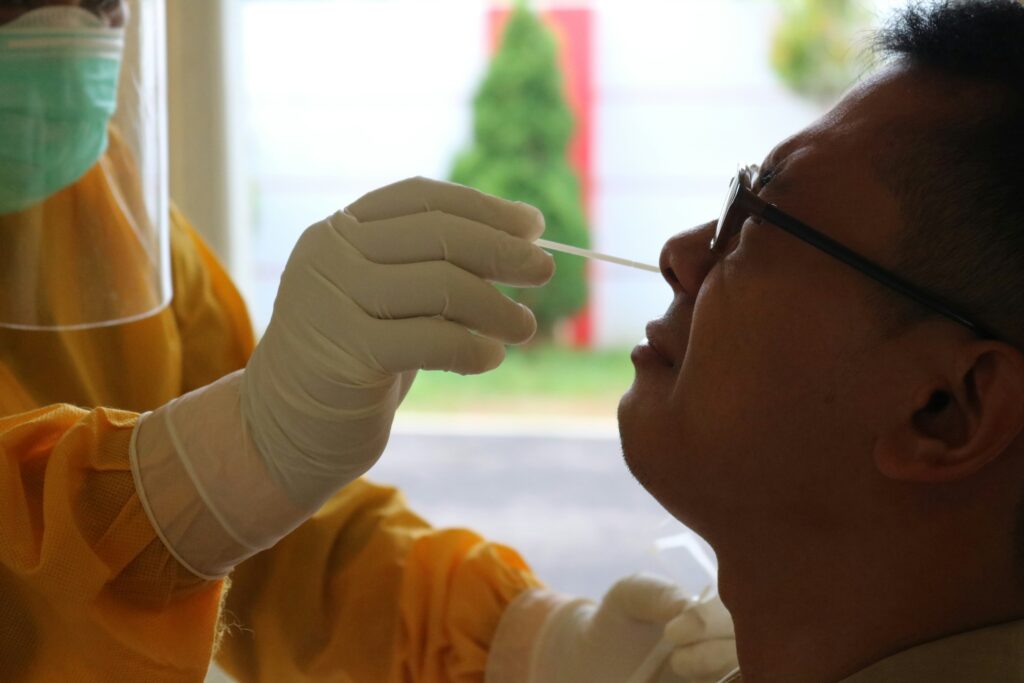COVID-19: AN IN-DEPTH OVERVIEW
Introduction
COVID-19, the disease caused by the novel coronavirus SARS-CoV-2, emerged in December 2019 in Wuhan, China, and quickly escalated into a global pandemic. This virus has drastically altered everyday life, prompting unprecedented public health measures, economic upheaval, and a significant toll on global health. This article delves into the origins, transmission, symptoms, prevention, treatment, and ongoing impact of COVID-19.
Origins and Global Spread
The SARS-CoV-2 virus belongs to the coronavirus family and is known for causing illnesses ranging from the common cold to more severe diseases like Severe Acute Respiratory Syndrome (SARS) and Middle East Respiratory Syndrome (MERS). The virus likely originated in bats and was transmitted to humans through an intermediate host, possibly at a seafood market in Wuhan.
Since its initial outbreak, COVID-19 has spread rapidly worldwide due to global travel and the virus’s highly contagious nature. By March 2020, the World Health Organization (WHO) had declared COVID-19 a pandemic, underscoring its widespread and severe impact.
Transmission
When a person with COVID-19 coughs, sneezes, talks, or breathes, respiratory droplets are the main way in which the virus spreads. People in the vicinity may inhale these droplets into their lungs, or they may land in their mouths or nostrils.
Transmission is most likely to occur in close-contact settings, particularly indoors and in crowded places. The virus’s ability to spread asymptomatically—when individuals do not show symptoms—complicates containment efforts.
Symptoms
COVID-19 Symptoms vary widely, ranging from mild to severe, and typically appear 2–14 days after exposure. Common symptoms include:
- Fever or chills
- Cough
- Shortness of breath or difficulty breathing
- Fatigue
- Muscle or body aches
- Headache
- A new loss of taste or smell
- Sore throat
- Congestion or runny nose
- Nausea or vomiting
- Diarrhea
Severe cases can lead to complications such as pneumonia, acute respiratory distress syndrome (ARDS), organ failure, and death. Older adults and individuals with underlying health conditions like heart disease, diabetes, and chronic respiratory diseases are at higher risk for severe illness.


Prevention
Preventing the spread of COVID-19 involves a multi-faceted approach:
- Vaccination: COVID-19 vaccines have proven highly effective in preventing severe illness, hospitalization, and death. Vaccination campaigns have been rolled out globally, with booster shots recommended to enhance immunity over time.
- Hand Hygiene: Regular handwashing with soap and water for at least 20 seconds or using hand sanitizer with at least 60% alcohol helps reduce the risk of infection.
- Face Masks: Wearing masks, especially in indoor and crowded settings, reduces the transmission of respiratory droplets.
- Physical Distancing: Maintaining at least 6 feet of distance from others in public places helps minimize close contact with potentially infected individuals.
- Avoiding Crowded Places: Limiting time spent in crowded, enclosed spaces with poor ventilation reduces exposure risk.
- Cleaning and Disinfecting: Regularly cleaning frequently touched surfaces, such as doorknobs, light switches, and smartphones, helps remove potential virus particles.
Treatment
While there is no cure for COVID-19, several treatments can help manage symptoms and reduce the severity of the disease:
- Supportive Care: Most people with mild illnesses recover at home with rest, hydration, and over-the-counter medications to relieve symptoms like fever and cough.
- Antiviral Medications: Drugs such as remdesivir have been used to treat COVID-19 patients by inhibiting viral replication.
- Monoclonal antibodies: These laboratory-made proteins can help the immune system recognize and fight the virus more effectively.
- Anti-inflammatory Drugs: Medications like dexamethasone, a corticosteroid, have been shown to reduce mortality in severe cases by dampening the overactive immune response.
- Oxygen Therapy: For patients with low blood oxygen levels, supplemental oxygen is provided to maintain adequate oxygenation.
- Mechanical Ventilation: In critical cases, patients may require mechanical ventilation to support breathing.
Impact and Ongoing Challenges
The COVID-19 pandemic has had profound and far-reaching effects:
- Healthcare Systems: The surge in COVID-19 cases has overwhelmed healthcare systems, leading to shortages of medical supplies, hospital beds, and healthcare personnel. Non-COVID-19 medical treatments and elective procedures were often postponed or canceled.
- Economy: The pandemic triggered a global economic downturn, with businesses closing, unemployment rates soaring, and supply chains disrupted. Governments implemented stimulus packages to support economies and individuals affected by lockdowns and restrictions.
- Education: Schools and universities worldwide have transitioned to remote learning, creating challenges for students and educators. Access to technology and the internet became critical issues, exacerbating educational inequalities.
- Mental Health: The pandemic has taken a toll on mental health, with increased rates of anxiety, depression, and stress due to isolation, fear of illness, and economic uncertainties. Mental health services have seen a surge in demand.
- Vaccination Efforts: Massive vaccination campaigns have been launched globally. However, challenges such as vaccine distribution, public hesitancy, and the emergence of new variants continue to complicate efforts to achieve herd immunity.
Conclusion
COVID-19 has reshaped our world in unprecedented ways, emphasizing the need for robust public health infrastructure, global cooperation, and continuous scientific research. As vaccination efforts continue and new treatments are developed, there is hope for controlling the pandemic and returning to a sense of normalcy. However, vigilance remains crucial as the virus continues to evolve, presenting ongoing challenges and uncertainties.
Understanding the nature of COVID-19, its transmission, and preventive measures is vital for navigating this ongoing public health crisis. By staying informed and adhering to recommended guidelines, individuals can contribute to collective efforts to mitigate the impact of COVID-19 and protect public health.

I LOVE U